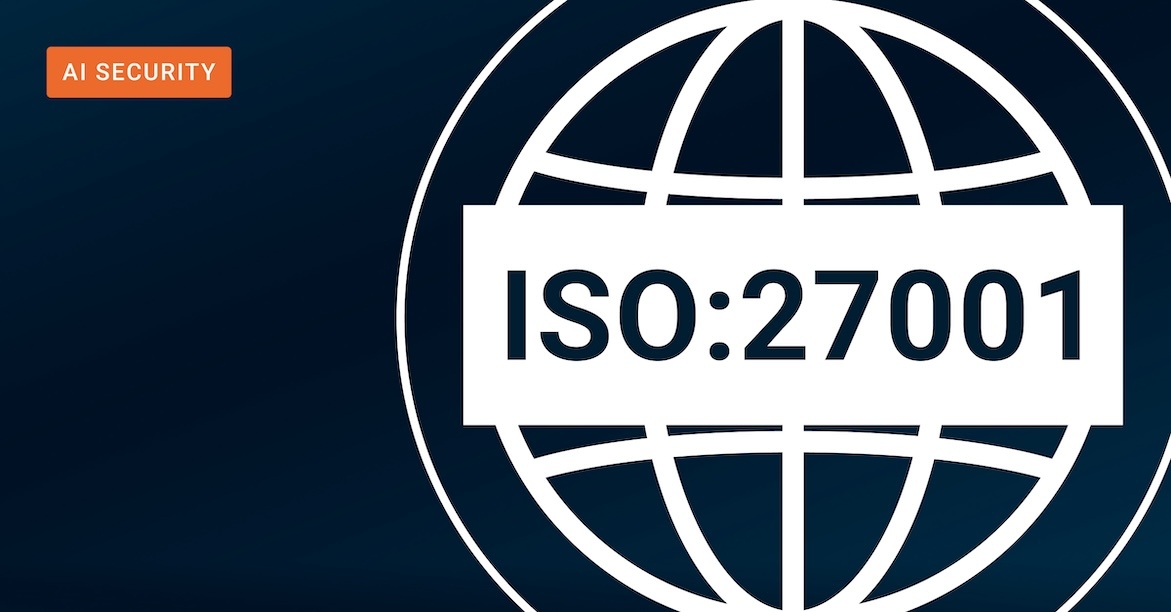In the world of GenAI, ISO 27001 certification is no longer a differentiator; it’s a prerequisite for any serious conversation with a potential vendor. But while it tells you that a vendor can protect information, it, alone, doesn't guarantee they can manage the deeper, more nuanced challenges that Generative AI introduces – specifically, how your invaluable data is used, transformed, and sometimes even exposed within generative AI systems.
As the GenAI attack surface continues to evolve, true trust in a GenAI solution demands more than just a security certification: It requires a full ecosystem of responsible practices: strong model governance, clear explainability, privacy-by-design, continuous risk monitoring, and robust AI guardrails.
Today, business leaders aren't just asking, "Is my data safe?" They're asking, "Is it being used fairly, transparently, and accountably?" Providers who truly go beyond ISO 27001 – with concrete actions, not just certifications – are the ones you'll want as long-term partners, not just initial vendors.
What ISO 27001 Covers (And Why It's Essential)
Let's be clear: the ISO 27001 standard isn't going anywhere. It’s the foundation for enterprise data security – providing a structured framework to manage and protect sensitive information. Here’s a brief overview at what ISO 27001 covers:
- Information Security Management System (ISMS): This is the core. It provides a structured blueprint for managing and protecting all your sensitive information, moving beyond ad-hoc security measures to a systematic approach across your entire organization.
- Risk Management: ISO 27001 mandates a proactive approach to identifying, assessing, and mitigating security risks. It ensures we’re constantly looking for vulnerabilities in our systems and processes, and taking decisive action to protect your valuable data.
- Access Control and Compliance: This critical aspect focuses on ensuring that only authorized individuals can access specific data, and that all data handling adheres strictly to relevant legal, regulatory, and contractual security requirements, including privacy regulations.
- Secure Development and Operations: Beyond just access, the standard emphasizes integrating security into the very fabric of how systems are designed, built, and operated. This includes secure coding practices, regular vulnerability management, and robust configuration control.
- Incident Management and Continuous Improvement: ISO 27001 means we have clear, pre-defined procedures for responding swiftly and effectively to any security incidents. Crucially, it also instills a commitment to continuously monitor, review, and enhance our security posture, adapting to evolving threats.
So, while crucial, notice how these points primarily focus on preventing unauthorized access, maintaining data integrity, and managing general information security risks. They establish a robust baseline, but they don't specifically address the unique complexities that arise when Generative AI starts processing, learning from, and generating new data. That's where we need to dig a little deeper.
Four GenAI Requirements ISO 27001 Doesn't Prescribe
Now, let's talk about the specific challenges that keep business leaders up at night when it comes to adopting Generative AI. While ISO 27001 provides the framework to manage all information security risks, the solutions for these GenAI-specific nuances go beyond its core prescriptions.
Data Provenance and Lineage: Knowing Your AI's "Ancestry"
Imagine trying to understand a complex financial report without knowing where any of the numbers came from. That's the challenge with AI without clear data provenance. While ISO 27001 ensures data integrity and security at rest and in transit, it doesn't prescribe the technical mechanisms to track the multi-stage lifecycle of data as it's ingested, transformed, and used to enhance an AI model's output (e.g. using retrieval augmented generation).
Takeaway #1: To truly trust and audit AI outputs, you need robust data provenance tools. Look for GenAI platforms that offer immutable audit trails and transparent lineage mapping. This capability lets you see exactly how specific data points contributed to an AI’s output, ensuring integrity, reproducibility, and compliance.
AI Accountability and Liability: Who's Responsible When AI Makes a Call?
As AI systems become more autonomous – diagnosing medical conditions, approving loans, or recommending critical business strategies – the question of accountability for AI-driven outcomes is gaining in importance. Imagine an AI makes a harmful decision. Who is liable? ISO 27001 ensures your systems are secured against threats, but it doesn't define the necessary human oversight mechanisms, ethical guardrails, or the legal responsibilities for AI's autonomous decisions.
Takeaway #2: GenAI platforms that facilitate explainable AI and comprehensive decision logging make it easier to audit and attribute AI actions effectively. With that in place, implement clear governance frameworks for AI model development and deployment. This means defining roles, responsibilities, and decision-making processes around your AI, focusing on human-in-the-loop strategies where needed.
Continuous Monitoring and Risk Management: AI's Evolving Behavior
AI models can experience "model drift" over time – meaning their performance can degrade, or they might start to show biases due to shifts in real-world data, potentially introducing new security, privacy, or ethical risks. While an ISO 27001-certified ISMS mandates continuous monitoring of information security risks, it doesn’t specify the tools or metrics for detecting and managing these unique, AI-centric behavioral changes and their implications.
Takeaway #3: Establish continuous monitoring pipelines for your AI models post-deployment. This means real-time tracking of performance, bias, and emerging security vulnerabilities that stem from model behavior.
Scalability and Integration with Enterprise Systems: Making AI Work in the Real World
You can have the most secure AI model in the world, but if it can't scale to meet enterprise demand or integrate seamlessly with your existing ERP, CRM, or data warehouse systems, it’s just a proof-of-concept, not a business driver. While ISO 27001 certifies the security of information systems, it doesn't focus on the practical challenges of deploying AI at enterprise scale, its architectural fit, or its operational integration within your current technology ecosystem.
Takeaway #4: Choose GenAI platforms designed that have a track-record of scaling within harshly regulated enterprise environments. This ensures not just secure deployment, but also that your AI truly delivers value across your entire organization, securely and at scale.
Ready to Build Trust and Transform with GenAI?
Navigating the complexities of Generative AI to build GenAI solutions that deliver genuine value goes far beyond simply "checking the box" on security certifications. It requires a proactive, comprehensive approach to data governance, accountability, and deployment. For business leaders, this isn't just about avoiding risk; it's about unlocking the immense potential of AI with confidence.
Are you ready to truly trust your GenAI solutions and drive real business value?
Head over to our Security and Trust Center page to learn more about how Squirro delivers proven privacy, security, and responsible AI capabilities at scale to customers in the most demanding environments. Explore our dedicated resources to see how we help enterprises like yours navigate these complexities and lead with confidence in the age of AI.
And be sure to download our comprehensive white paper, "Data Protection for Enterprise GenAI: A Practical Guide," to explore in-depth strategies for safeguarding customer data, ensuring compliance, and building trust in the AI era.







